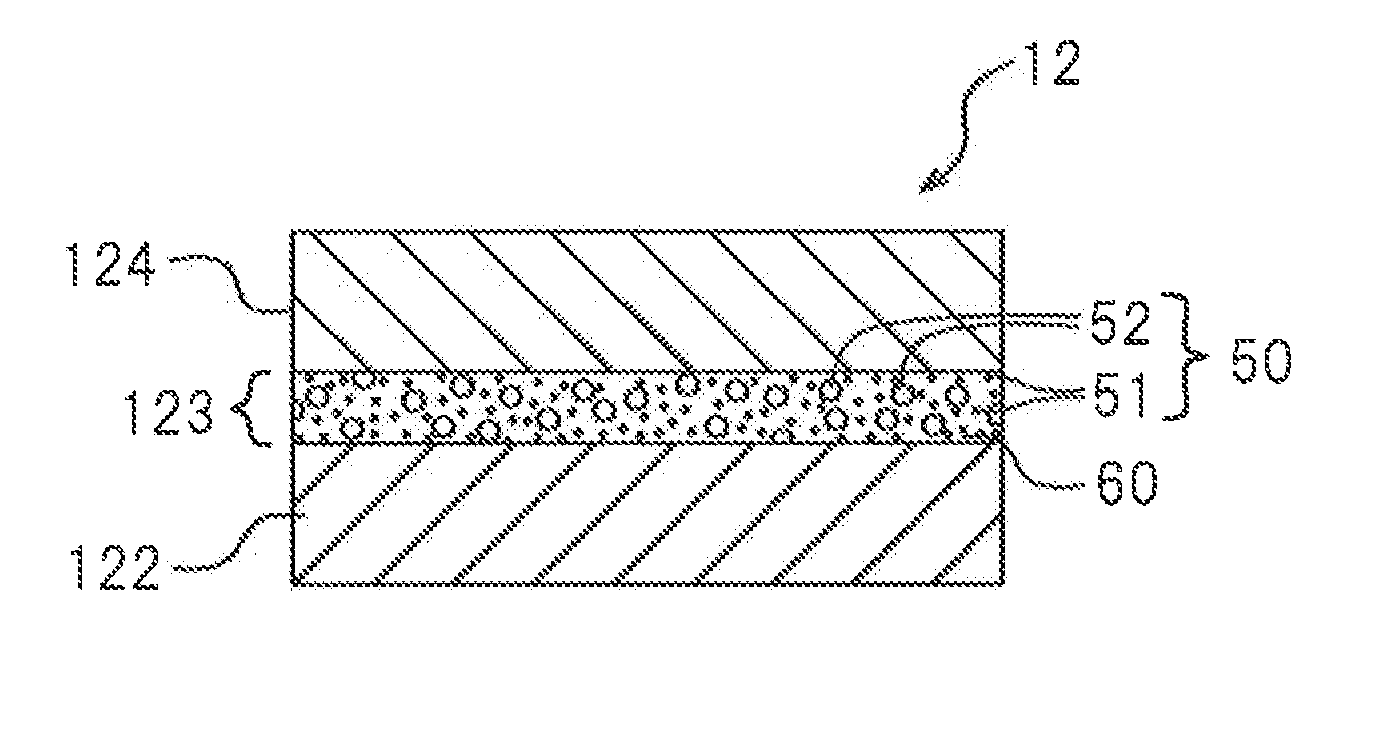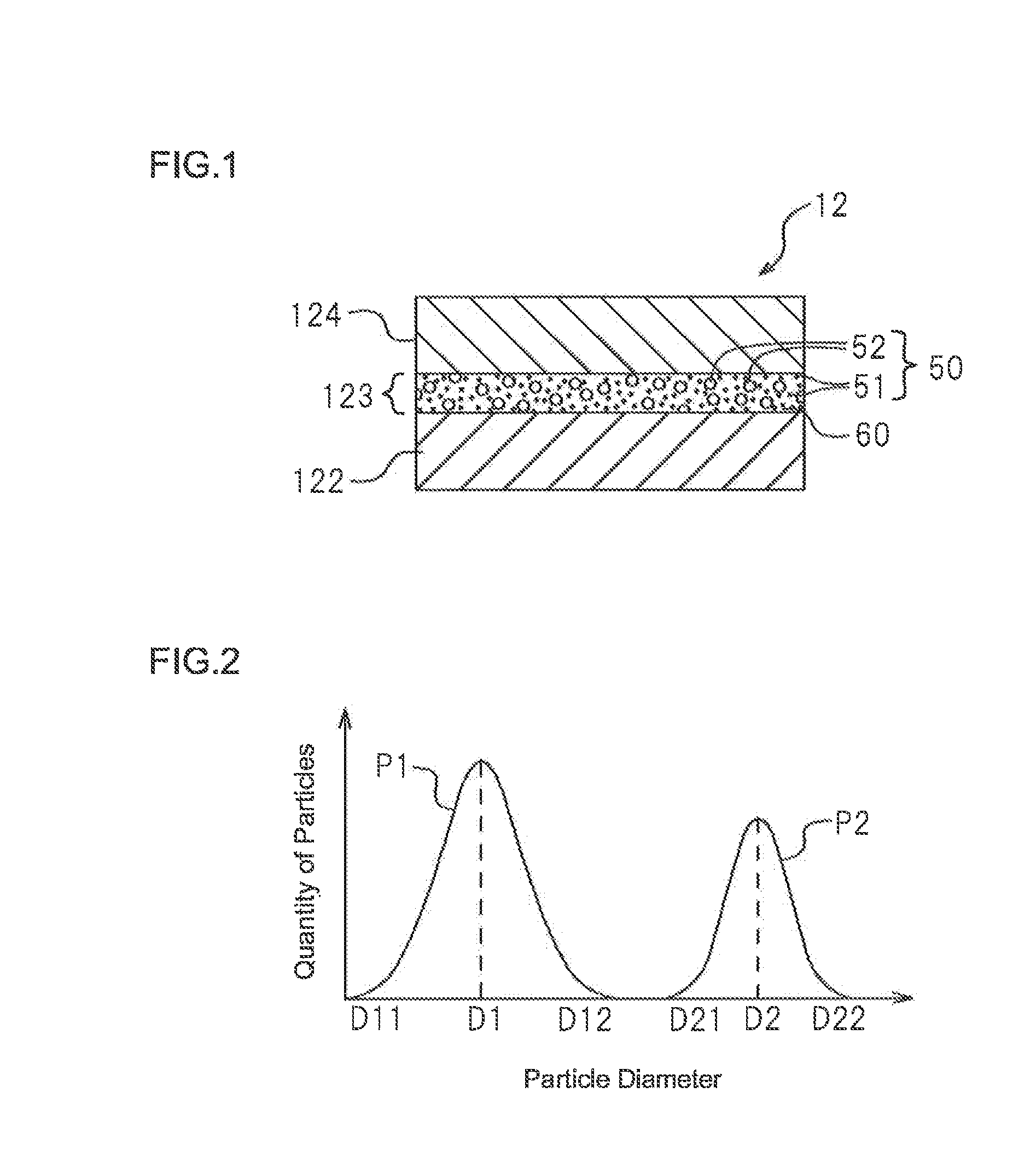Battery electrode and use thereof
- Summary
- Abstract
- Description
- Claims
- Application Information
AI Technical Summary
Benefits of technology
Problems solved by technology
Method used
Image
Examples
example 1
[0066]Using an aluminum foil as the current collector, was fabricated an electrode sheet comprising as the positive electrode active material a lithium nickel cobalt manganese composite oxide having a composition represented by LiNi1 / 3Co1 / 3Mn1 / 3O2.
[0067]Conductive intermediate layers were formed as follows: That is to say, acetylene black (AB) having an average particle diameter of 35 nm was used as the first conductive particle group, acetylene black having an average particle diameter of 76 nm was used as the second conductive particle group, and PVDF was used as the binder. The first conductive particle group, the second conductive particle group and the binder at a mass ratio of 80:14:6 were mixed in NMP (solvent) to an NV of approximately 9% by mass to prepare a composition for forming intermediate layers. The mass ratio of the conductive particles to the binder is 94:6. This composition was applied to each face of a 15 μm thick long aluminum foil (current collector) and allowe...
example 2
[0069]In the same manner as Example 1 except that the mass ratio of the first conductive particle group to the second conductive particle group to the binder was 70:24:6 in the composition for forming intermediate layers, an electrode sheet was fabricated.
example 3
[0070]In the same manner as Example 1 except that the mass ratio of the first conductive particle group to the second conductive particle group to the binder was 50:44:6 in the composition for forming intermediate layers, an electrode sheet was fabricated.
PUM
| Property | Measurement | Unit |
|---|---|---|
| Length | aaaaa | aaaaa |
| Fraction | aaaaa | aaaaa |
| Fraction | aaaaa | aaaaa |
Abstract
Description
Claims
Application Information
 Login to View More
Login to View More - R&D
- Intellectual Property
- Life Sciences
- Materials
- Tech Scout
- Unparalleled Data Quality
- Higher Quality Content
- 60% Fewer Hallucinations
Browse by: Latest US Patents, China's latest patents, Technical Efficacy Thesaurus, Application Domain, Technology Topic, Popular Technical Reports.
© 2025 PatSnap. All rights reserved.Legal|Privacy policy|Modern Slavery Act Transparency Statement|Sitemap|About US| Contact US: help@patsnap.com



